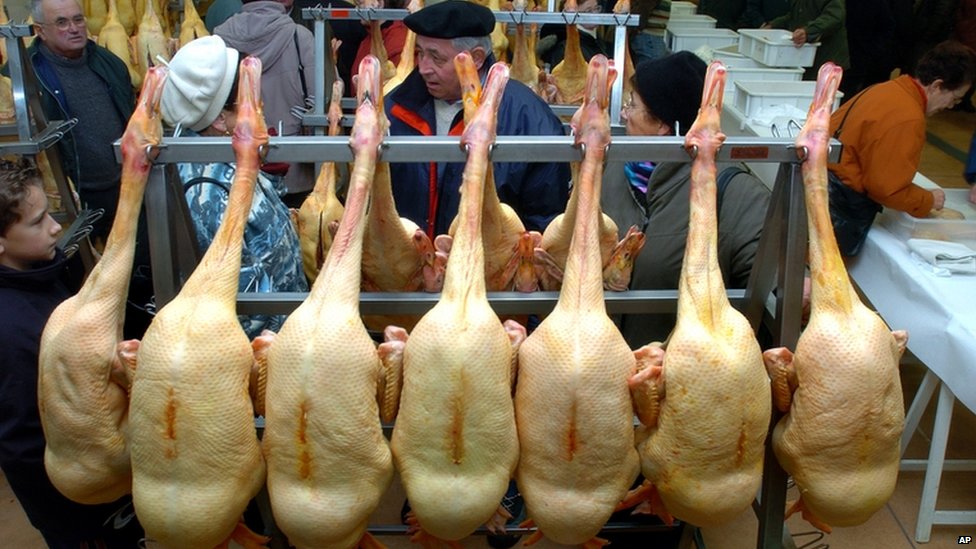
The sector generates more than 50 000 direct jobs in the EU with a turnover of 4 billion euros. Some areas of the world produce foie gras via natural overfeeding.

France is the largest producer of foie gras 83 of world production in 2002 mostly from ducks 95.
Production of foie gras. The birds most commonly used for foie gras production are the Mule or Mulard duck a cross between the Muscovy and domestic duck and the Landes or Landaise goose. France is the largest producer of foie gras 83 of world production in 2002 mostly from ducks 95. France also produces around 25 of the worlds goose foie gras.
Fat liver a delicacy of French cuisine the liver of a goose or duck that has been fattened by a process of force-feeding. What is generally regarded as the best foie gras is produced in the province of Strasbourg. Foie gras is ideally very firm and smoothly textured with a colouring of creamy white tinged with pink.
As foie gras is made from only the livers of male ducks all the female ducklings are of little value and are therefore simply tossed into grinders alive for processing into other products like cat food. In France alone which accounts for 78 of world production an estimated 37 million ducks and 700000 geese are slaughtered every year. FATTY LIVER OR FOIE GRAS PRODUCTION Fatty liver production is the process of force-feeding cramming geese which are normally between 9-25 weeks of age for a period of 14-21 days.
During this period the weight of the liver will increase from an initial weight of. Foie gras or fatty liver is strongly associated with French culinary heritage and the country is a significant producer and consumer of the food product thus it is no surprise to see it at the. The Process of the Production of Foie Gras For a liver product to be considered foie gras it must be inflated to ten times the size of a functioning duck or goose liver.
This process must go ahead whilst the bird is still alive meaning manufacturers must find a way to grotesquely inflate the liver whilst the bird is still breathing. Foie gras production requires force-feeding birds to enlarge their livers up to 10 times the normal size. Many animal rights activists describe the process as cruel and torturous.
Government decision makers have been listening. With a production of around 2500 birds a week La Belle Farm is the second largest of the three foie gras farms in the country the others are Hudson Valley Foie Gras located a few miles away in Sullivan County and Sonoma Artisan Foie in California. Despite its relatively large size La Belle Farm is still a vertically integrated farm.
To produce foie gras the French term means fatty liver workers ram pipes down the throats of male ducks twice each day pumping up to 22 pounds of grain and fat into their stomachs or geese three times a day up to 4 pounds daily in a process known as gavage. Approximately 22 700 tonnes of foie gras were produced in the European Union in 2019 21 550 tonnes of duck foie gras and 1 150 tonnes of goose foie gras. The sector generates more than 50 000 direct jobs in the EU with a turnover of 4 billion euros.
The EU produces approximately 90 of the worlds foie gras. Production of foie gras is not on the same level as factory farming which is much more damaging to animal welfare he says. Sousa slaughters about 800 geese each year using a traditional.
Animal Equality recently visited a foie gras farm to witness the production of the cruel delicacy first hand. To our amazement many farms in France offer. Traditionally foie gras is made by fattening a goose or duck by force-feeding it corn using a feeding tube.
This process is called gavage. Some areas of the world produce foie gras via natural overfeeding. In most cases ducks used to make foie gras will be force-fed two times a day for 125 days.